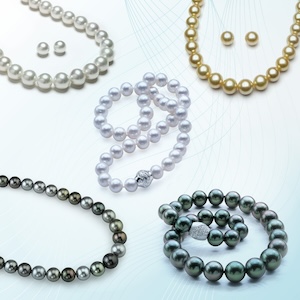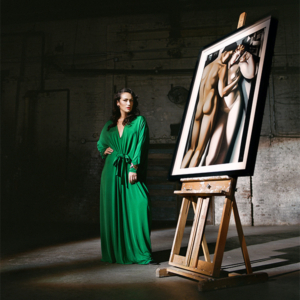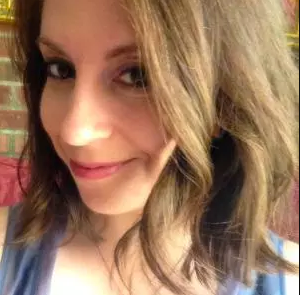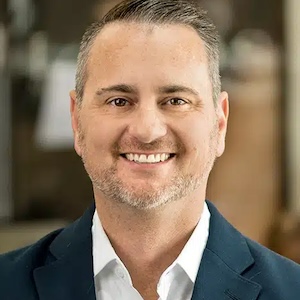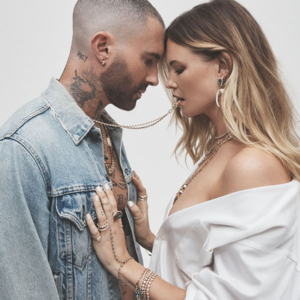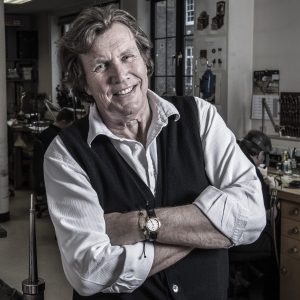
After some roller-coaster decades that saw the Theo Fennell brand become well-known, go public, and then, in 2017, sink into administration (the U.K. version of Chapter 11), the award-winning designer has led a management buyout of his namesake company. The new firm will be run by TF Topco, controlled by Fennell and managing director Neal Sussman, and operated out of its iconic boutique in the Chelsea section of London, where it’s been located since 1982.
Here, the 69-year-old designer—whose celebrity clientele has included Elton John and Lady Gaga—talks with JCK about why his business didn’t work as a brand, what advice he would give designers in dealing with moneymen, and his plans now that he’s finally regained control of his namesake company.
JCK: Tell me about the new structure.
Theo Fennell: Basically, the current management and employees own the company, with me as the major shareholder. We will now only have ourselves to blame.
The thought was to do what we do best—a lot of one-off pieces, some small-run, limited-edition pieces—and enjoy ourselves as a design- and craftsmanship-based business. Our ambition is to make really beautiful jewelry handmade and please a very, very select clientele.
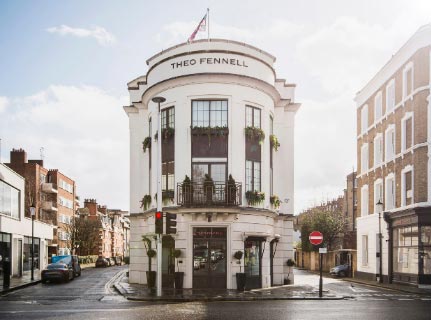
You have had quite a ride over the last few decades. You want to give us your version of what happened?
[In the 1990s,] we had a company that was growing very fast. In 1997, we were listed on the AIM [the Alternative Investment Market, London’s “junior” stock exchange].
By 2006, we got to a stage where we were so big that we couldn’t continue without substantial investment. The owners didn’t want to put their hands in their pockets, but also didn’t want to lose control of a company they enjoyed owning. We were caught between two stools.
The then-owners asked me to leave, and then nine months later they asked me back, but the business had already been torn apart. We really needed funding. That position was exacerbated in 2008 with the financial crisis. We tried to patch it back together.
Then some venture capitalists came in and they did what most venture capitalists do, which is to mess around a bit, pick everything dry, and then leave us in the lurch, and we went into administration.
And then after administration, you got a new owner.
Yes, Endless. They were very bright and very helpful. They are what corporate investors should be like and very few are. By that point, we were out of Selfridges and Harrods [department stores] and all those places, which turned out to be good. [COVID-19] lockdown turned out to be beneficial for us, as we were able to concentrate on bespoke pieces.
So it’s like you are getting back to how you started.
We always did far, far better doing what we did well before the ambitions of various moneymen got the better of the business. There has been an obsession over the last 20 years that every business was rollout-able and reproducible and can become a brand. That doesn’t always make for a successful business.
What lessons do you think your experience has for other jewelry designers?
My feeling is that, on the whole, professional investors have various formulae. Some things fit into that, and some things don’t, and because [investors] are not creative people on the whole they don’t find it easy to change that formula. They forget the reason that the companies became very successful was because they were original. They make something into a pale imitation of the original company, and they are very surprised when it doesn’t work.
Every designer, when the investors come in and take away their name, they will be frustrated because their vision will be corrupted. Occasionally you will get great pairings of the creative force and the business side, but it’s very rare when you do get it. There’s a huge difference between business and creative craftsmanship. The two are not compatible.
However much the big brands talk about craft, they are businesses. They want to make as many things as possible, as cheaply as they can. There is a big difference in what they do and what we do. We see ourselves as artists that make things that people should buy in the way that they would buy a picture or a piece of handmade furniture.
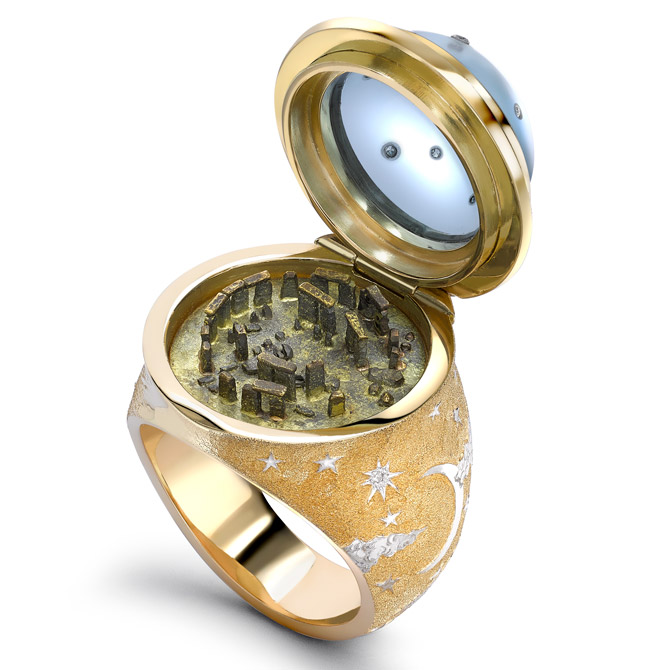
You are known as a designer of “quirky” pieces.
We have done a lot of custom portrait rings and pieces that were not particularly mainstream. They are for people who have a lot of confidence in what they wear. If you are wearing a watch that has a name stamped all over it, you know everybody else will know what it is. That’s why it’s called branded jewelry. It’s like a cow with a brand stamped on its [backside].
It seems to me if you can afford to have beautiful jewelry, you wouldn’t have something that can be chosen for you as an individual, rather than joining the herd.
So in a way you are getting back to your roots.
Yes. Definitely.
(Photos courtesy of Theo Fennell)
Follow JCK on Instagram: @jckmagazine
Follow JCK on Twitter: @jckmagazine
Follow JCK on Facebook: @jckmagazine

